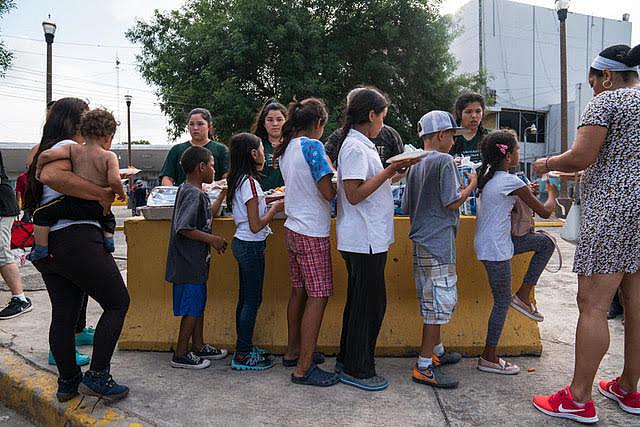Migrant children face huge challenges as they enter U.S. school system

(Photo by Verónica G. Cárdenas/Getty Images)
A great deal of national attention is focused on the immigration debate, from the Trump administration’s effort to build a wall on the southern border to their policy of separating migrant children from their parents to whether conditions the children are living in are “safe and sanitary.” We are all familiar with the heartbreaking audiotapes of children crying for “mami” and “papi” as well as videos of toddlers who, after being released, no longer recognize their parents.
For years, undocumented immigrants were mostly single men, looking for work. Now it’s mostly families with children. The federal Office of Refugee Resettlement served fewer than 8,000 children each year from fiscal year 2003 to 2012. In fiscal year 2018 alone, the agency served nearly 50,000 children. And the numbers appear to be accelerating. Most come from El Salvador, Guatemala and Honduras, Central American countries with some of the world’s highest rates of homicide, gang violence and poverty.
While Congress voted down funding for the wall and a federal judge ruled against the separation policy, undocumented children in the U.S. still face enormous challenges and very difficult lives. It takes up to five years for the courts to get through their asylum cases, during which time they are expected to be in public schools, getting an education. But it’s not easy. By federal law, districts are required to enroll and educate children, regardless of their immigration status.
Educators describe what it’s like to teach when some of the students don’t speak English or Spanish but only indigenous languages, or when teenage boys test at the second- or third-grade level because they were pulled from school when they were 9 or 10 to work full-time. Whether they come to this country with their parents, are reunited with them after crossing alone, or continue to be unaccompanied minors here, the number of these children in U.S. schools is having significant impact on districts across the country.
For my 2019 National Fellowship project, I want to explore the array of issues these children face when our systems attempt to assimilate them. I’ll be pursuing a deep-dive into a single school district – exploring the unprecedented challenges education professionals must address when they attempt to create and manage programs and services to support undocumented children who are navigating life in a foreign country.
When policymakers debate how to address the influx, the main topics are pedagogical, such as whether to require students to learn in English-only classes. Unfortunately, learning challenges often are the lowest hurdles undocumented immigrant children face. The experience of each child is unique, but themes repeat again and again. Being separated from their parents and placed with distant relatives in the states, witnessing a fellow traveler being raped during the trip to the border, having to step around the bodies of those who perished before them on similar journeys — virtually every child has faced some sort of trauma. Even when districts successfully enroll undocumented children, the increasingly hostile national political climate creates a less-than-ideal learning environment.
Immigrants are stigmatized as drug traffickers, rapists and murderers, and they live in constant fear of ICE raids and deportation. Studies show that depression, anxiety and panic disorder are common among undocumented adults, and schools report that these health challenges impact undocumented children as well. They are also vulnerable to gang recruitment and other negative influences. Successful completion of primary and secondary school is one of the best paths out of poverty, but success isn’t likely when a student skips schools every time it is rumored that federal agents might be in the community looking for “illegals.”
Unless something changes, the nation risks firmly establishing undocumented people as a permanent underclass.

